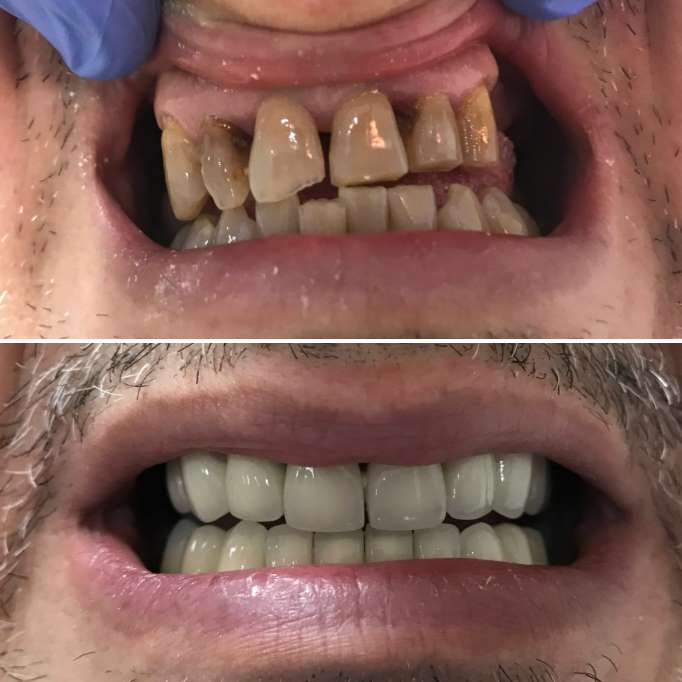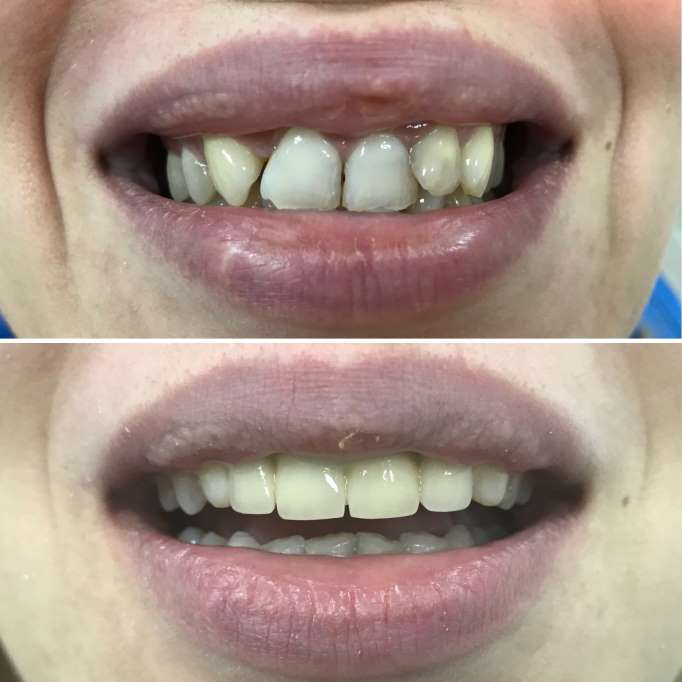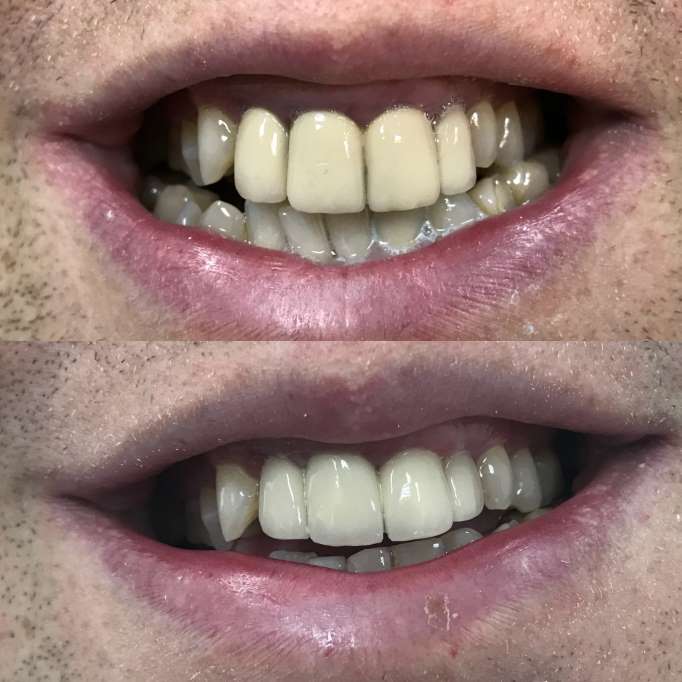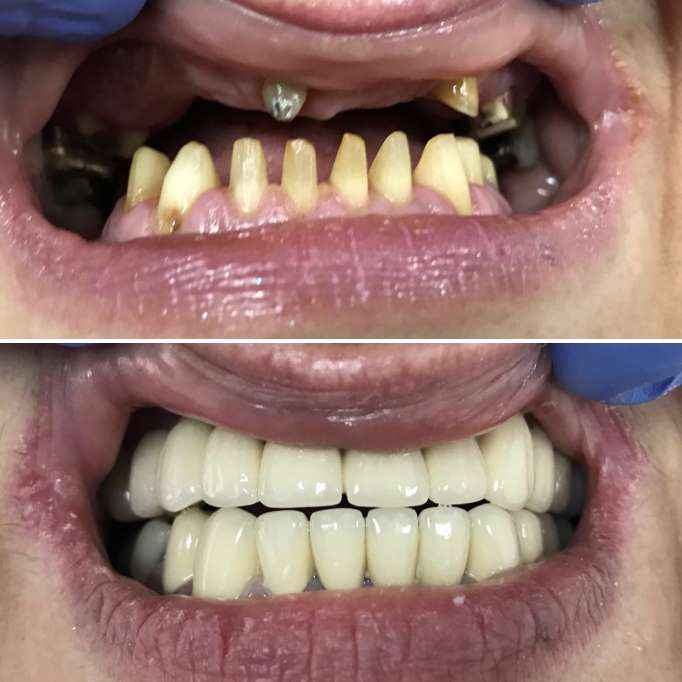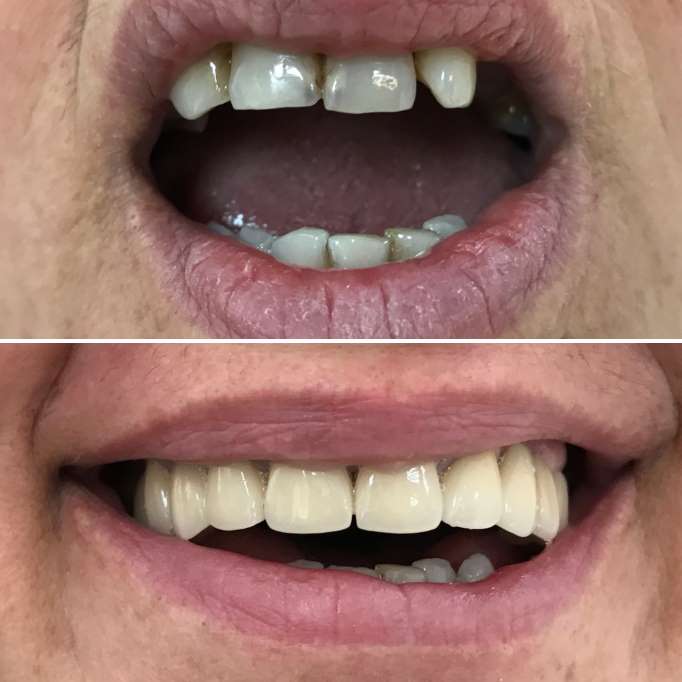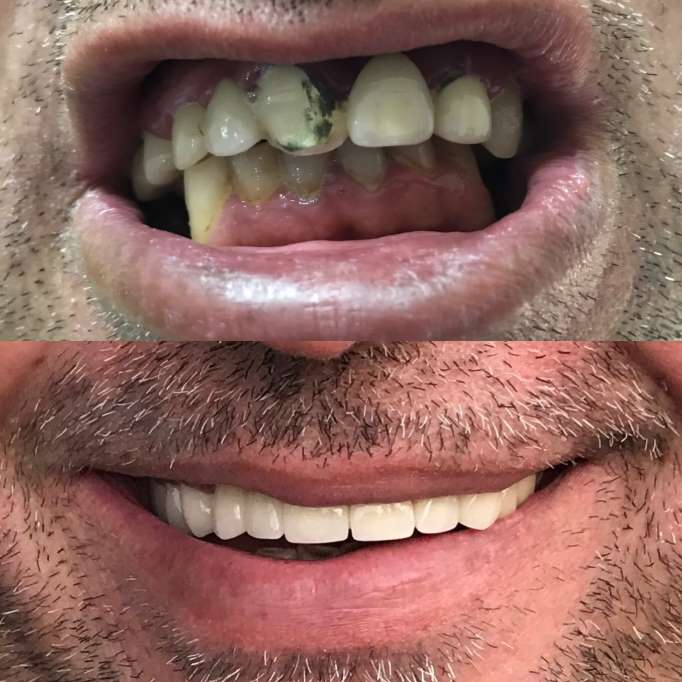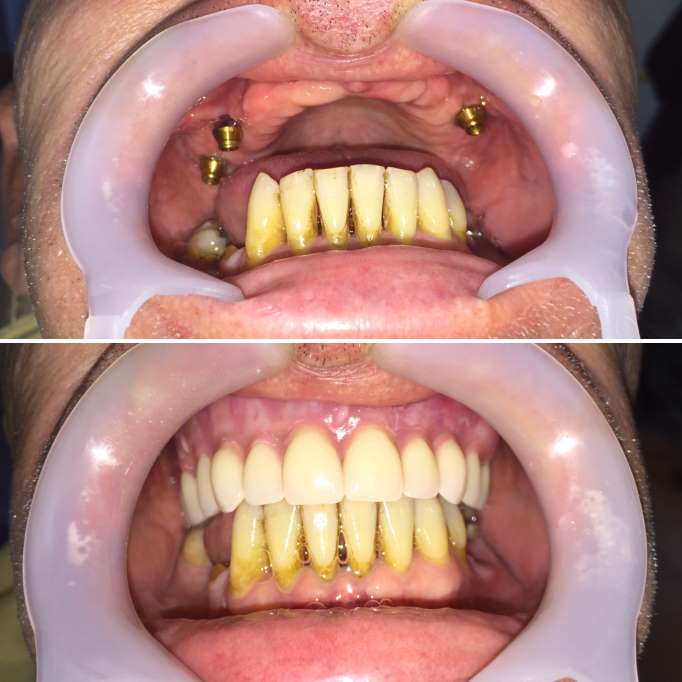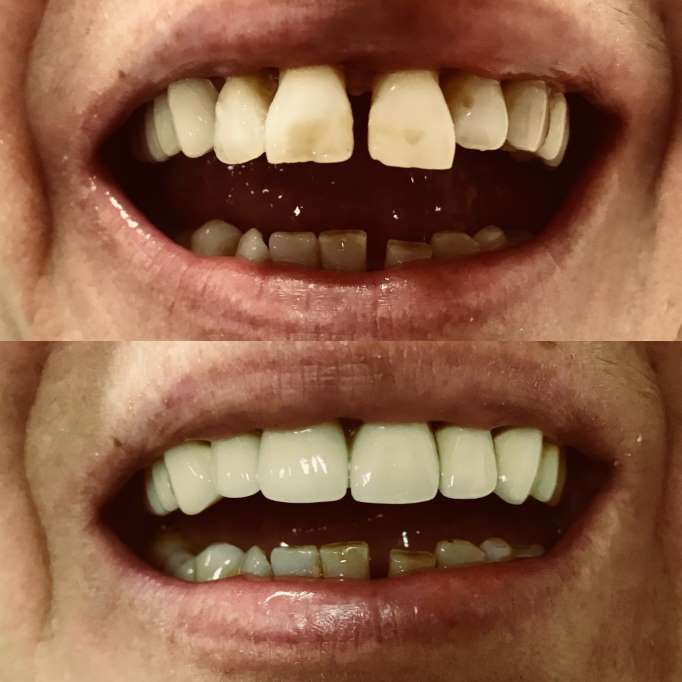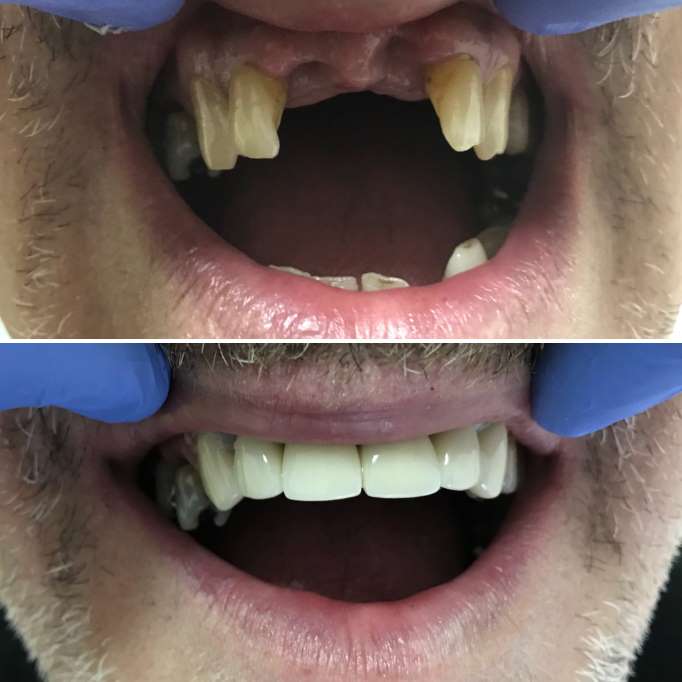Aesthetic dentistry
Aesthetic dentistry today is a challenge for every dentist. By constantly improving, we achieve top results in the field of aesthetics and we try to beautify everyone’s smile.
Due to poor aesthetic and biomechanical properties, the amalgam fillings (black fillings) are no longer used in modern dentistry.
Aesthetic, composite fillings or white fillings have proven effective for more than 20 years, and they have found a significant place in the treatment of caries, especially that of the front teeth. There were large problems with the first composites’ fillings on the side of the teeth, because the pressure force on the tooth during chewing in the region is much greater than that in the area of the anterior teeth.
The revolution in aesthetic dentistry has occurred when the hybrid nanocomposites emerged; they are high-density materials with exceptional aesthetic characteristics.
In our practice we use the following composites Tetric Evo Ceram and Empress Direct, produced by the leader in dental material production – Ivoclar Vivadent company.
Aesthetic or fiber-glass posts are made for aesthetic upgrades on existing teeth roots that were previously treated. Fiber posts, which until a few years ago were the only type of posts in modern dentistry, have been suppressed back.
At Dentamed we use FRC Postec Plus pegs, of the renowned Ivoclar Vivadent company. They are most often used for making posts for metal – free ceramic crowns.
Metal – free ceramics are the most advanced teeth replacement system used in aesthetic dentistry. Aesthetic dentistry today cannot be imagined without the use of metal – free ceramic crowns during prosthetic tooth rehabilitation.
The days of visible metal edge of the crown in the neck of the teeth, as well as the unnatural color of the teeth are long gone. The metal – free ceramic achieves perfect aesthetic effects, while its biomechanical properties – closest to those of the natural teeth – guarantee the durability and endurance of these replacements.
In our practice, in addition to standard replacements, crowns and bridges, we also work with metal – free ceramics and ceramic inlays.
The simplest way to describe an inlay is to say that it is a perfectly made ceramic filling. A tooth with caries or one that already has a filling, is treated according to the principles similar to those for standard cavity processing for a standard filling. The difference is that, instead of placing the filling, an imprint is taken after the tooth is processed, and a ceramic filling is made in the laboratory, with exceptional precision (with CAD-CAM computer technology). It is fixed to the tooth by using special composite cement. So, there are no unpleasant matrices and long-term processing of filling, and the morphological characteristics of the inlays are perfect.
Facets in dentistry represent a thin layer of restorative material that is placed on the tooth surface in order to improve the appearance, color and shape, as well as to protect damaged surfaces.
The facets can be made of composite or ceramic. The composite facets are placed like composite fillings, directly in the mouth, or indirectly when they are previously made in dental laboratory. Nowadays, the most modern cements are used for fixing indirectly made facets, just like for the inlays. The porcelain facets are made in dental laboratory with CAD-CAM technology, within a day. They can be very thin and elegant (they resemble a corrective contact lens), and they are placed on teeth, from which an equally thin layer from the surface has been previously painlessly removed.



